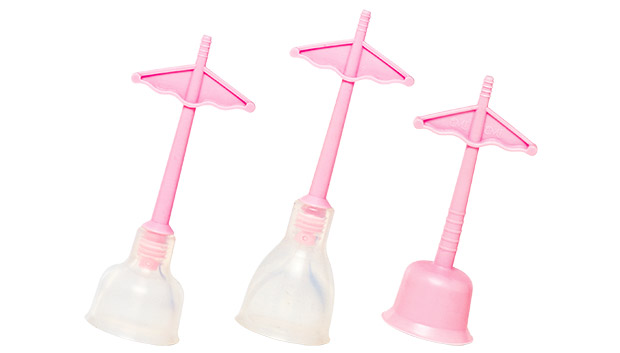
The operative technique of vacuum-assisted delivery (VAD) remains an important component of modern labor and delivery management, when an experinced physician concludes that a successful vaginal delivery is likely.
Using a two-person VAD system creates a consultative procedure where patient safety and best outcome remain the primary focus. The two-person system allows the physician maximum coordination of the physical assistance with maternal effort while the nurse monitors the application of vacuum pressure.
UTMD manufactures a variety of different cups designed for clinician preference. In the optimal OA (occiput anterior) low or outlet fetal positions representing about 90% of cases where VAD is indicated, any cup (bell or mushroom shaped) that fits on the fetal occiput will provide the physician with sufficient traction for successful delivery. In these cases, the best cup choice is the Tender Touch® Cup; a tissue friendly silicone, bell shaped cup that is safest for mother and fetus. Since mushroom shaped cups are capable of more aggressive traction, they should be reserved for more difficult deliveries by highly trained surgeons. Specifically, mushroom cups are indicated when the fetus is at a low OP (occiput posterior) position. UTMD’s Flex Cup® is designed for the low OP position and features a flexible stem which allows the physician to easily place the cup at the proper pivot point of the fetal occiput.
PRODUCT DESCRIPTION
Utah Medical Product's wide range of vacuum delivery systems include disposable and reusable soft vacuum cups as well as reusable manual vacuum pumps providing a safer choice for operative vaginal deliveries.
FEATURES - DISPOSABLE SILICONE BELL-SHAPED CUPS
FEATURES - DISPOSABLE POLYETHYLENE BELL-SHAPED CUPS
FEATURES - DISPOSABLE MUSHROOM-SHAPED CUPS
FEATURES - REUSABLE SILICONE BELL-SHAPED CUPS
FEATURES - MANUAL VACUUM PUMPS
INDICATIONS
• Gestational age > 36 weeks.
• No demonstrable cephalopelvic disproportion (CPD).
• Full dilation and effacement of the cervix.
• Ruptured membranes.
• Engaged fetal head at Outlet or Low Station.
CONTRAINDICATIONS
• Cephalopelvic Disproportion (CPD).
• Unengaged or Mid-Station fetal head>
• All non-vertex presentations.
• Incomplete cervical dilation.
• Gestational age < 36 weeks or estimated fetal weight (EFW) < 2500 grams.
• Cup attachment to fetal head at any other position than the occiput pivot point.
• Lack of obvious progress in fetal descent during first two pulls (contractions).
• Lack of delivery or lack of imminent delivery after four pulls.
• Disengagement of the vacuum cup from the fetal head three times.
• Failure to deliver after 20 minutes duration, or 10 accrued minutes at full applied vacuum, whichever comes first.
• Prior use of forceps.
For more information, please contact us by EMAIL or call 1-800-533-4984 | 1-801-566-1200.
© Copyright 2024 Utah Medical Products, Inc. All rights reserved.